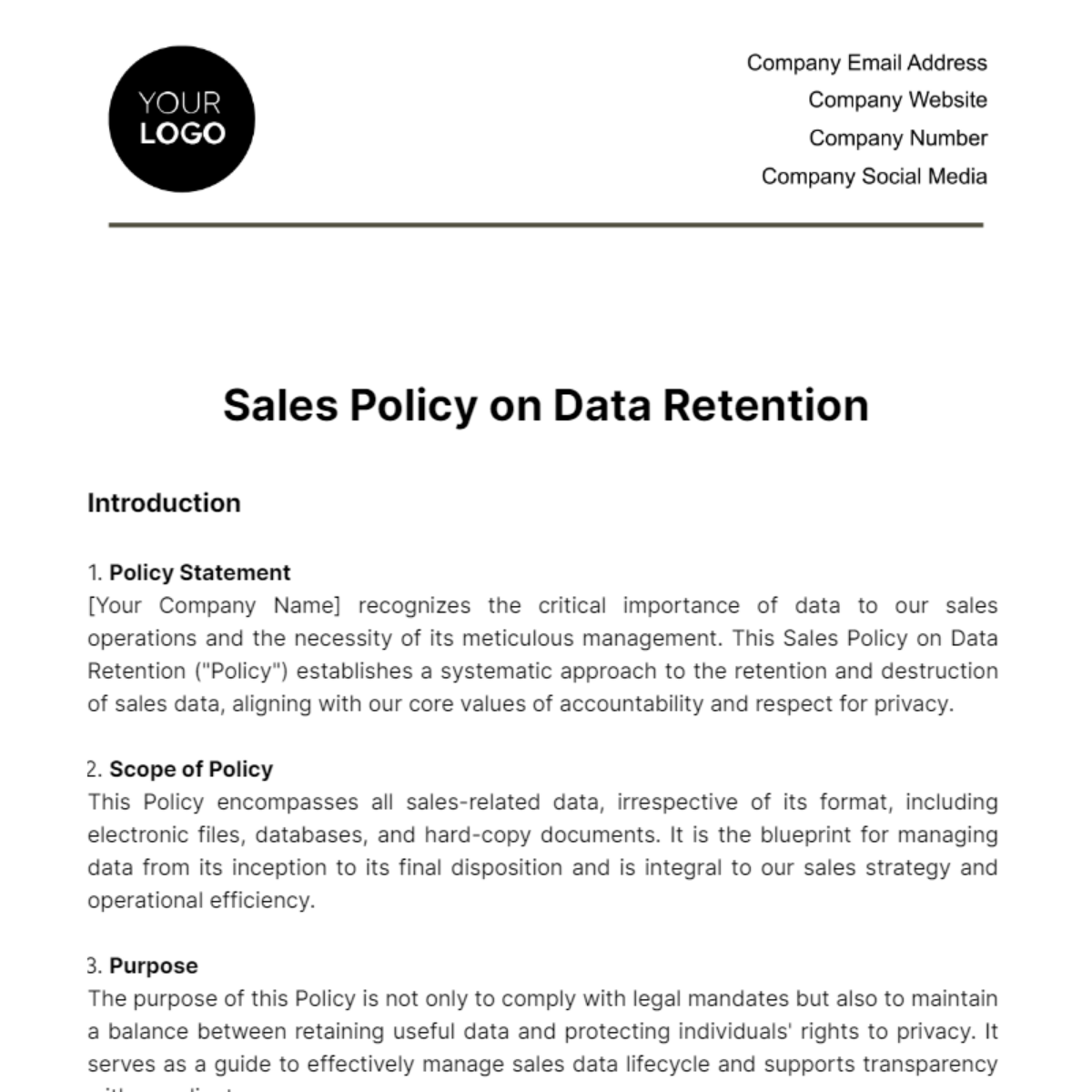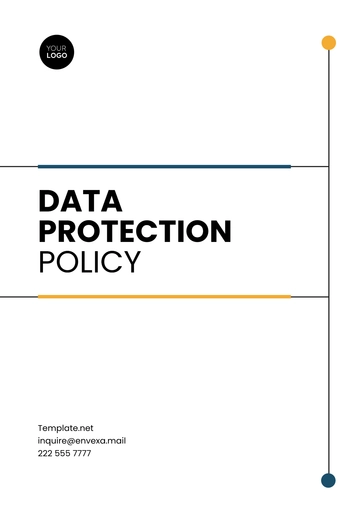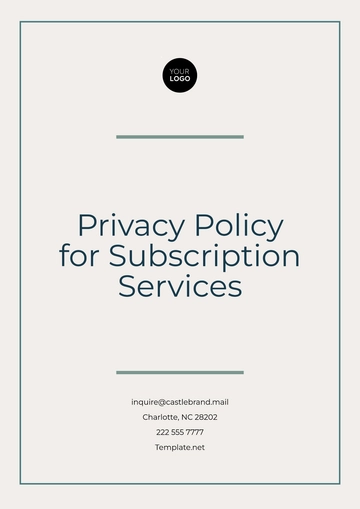Sales Policy on Data Retention
Introduction
Policy Statement
[Your Company Name] recognizes the critical importance of data to our sales operations and the necessity of its meticulous management. This Sales Policy on Data Retention ("Policy") establishes a systematic approach to the retention and destruction of sales data, aligning with our core values of accountability and respect for privacy.
Scope of Policy
This Policy encompasses all sales-related data, irrespective of its format, including electronic files, databases, and hard-copy documents. It is the blueprint for managing data from its inception to its final disposition and is integral to our sales strategy and operational efficiency.
Purpose
The purpose of this Policy is not only to comply with legal mandates but also to maintain a balance between retaining useful data and protecting individuals' rights to privacy. It serves as a guide to effectively manage sales data lifecycle and supports transparency with our clients.
Data Retention Principles
Legality, Transparency, and Fairness
Data retention practices at [Your Company Name] are rooted in the law and ethics, ensuring that every piece of data we retain has a clear purpose and its retention is justified. We endeavor to be transparent in our data practices, providing clear information to stakeholders about what data is retained and why.
Limitation and Minimization
Our approach to data retention is governed by the principles of necessity and minimization, ensuring that we do not retain data beyond its utility or legal requirements. We constantly evaluate our data practices to ensure that our data footprint is as light as possible while serving our business needs.
Data Retention Schedule
Definition of Sales Data
Sales data at [Your Company Name] comprises the full spectrum of information that enables our sales force to operate effectively, including data used for market analysis, client relationship management, and sales forecasting.
Retention Periods
The following table illustrates our commitment to precise data retention, aligning with the period of utility and legal stipulations:
Data Category | Description | Retention Period | Legal Basis | Review Period |
Client Information | Name, contact details | 5 years | Contractual necessity and tax laws | Biennial |
Transaction Data | Records of sales transactions | 7 years | Tax laws and financial regulations | Annually |
Contract Documents | Signed contracts and agreements | 7 years after end of the contract term | Legal obligations and contractual requirements | After contract term |
Retention periods are designed to be responsive to changes in legal frameworks and will be adjusted as necessary to remain in compliance.
Data Storage and Security
Storage Methods
Data is stored within a secure environment that is routinely tested for vulnerabilities. Access to this data is logged and monitored to prevent any unauthorized access or data breaches.
Data Security Measures
Robust security measures at [Your Company Name] include regular updates to our security protocols and systems, staff training on data security, and a swift response plan for any potential data breaches to mitigate risks effectively.
Data Retention Responsibilities
Sales Department
Our Sales Department is the custodian of sales data and is thus charged with the daily application of this Policy. Regular internal meetings ensure that the principles of this policy are well understood and followed diligently.
Data Protection Officer
The DPO is tasked with not just overseeing compliance but also serving as the point of contact for any internal or external inquiries regarding data retention. The DPO also ensures that retention practices are in line with the evolving landscape of global data protection regulations.
Data Retention Audits
Audit Frequency
Audits are meticulously planned and executed, encompassing a review of both digital and physical records. These audits help us to refine our data retention processes and address any discrepancies proactively.
Audit Procedure
The audit involves interviewing responsible personnel, inspecting storage systems, and verifying compliance with both this Policy and applicable laws. The findings are reported to senior management with recommendations for any necessary actions.
Data Disposal
Disposal Methods
Disposal of data is handled with the same level of security as its retention. Methods are evaluated for their effectiveness and environmental impact, with a preference for those that are both secure and sustainable.
Documentation of Disposal
The maintenance of disposal records helps ensure we have a clear, traceable history of our data management practices. These records are periodically reviewed to confirm adherence to our disposal standards and protocols.
Policy Review and Update
Review Schedule
In addition to the set review cycle, any significant changes in our business operations or technology adoption may trigger an off-cycle review, ensuring that our Policy remains up-to-date with current practices.
Amendment Procedures
Amendments made to this Policy will follow a structured process that includes stakeholder feedback, a comprehensive impact analysis, and a clear communication plan to ensure a smooth transition to any new practices.
Sales Templates @ Template.net






























